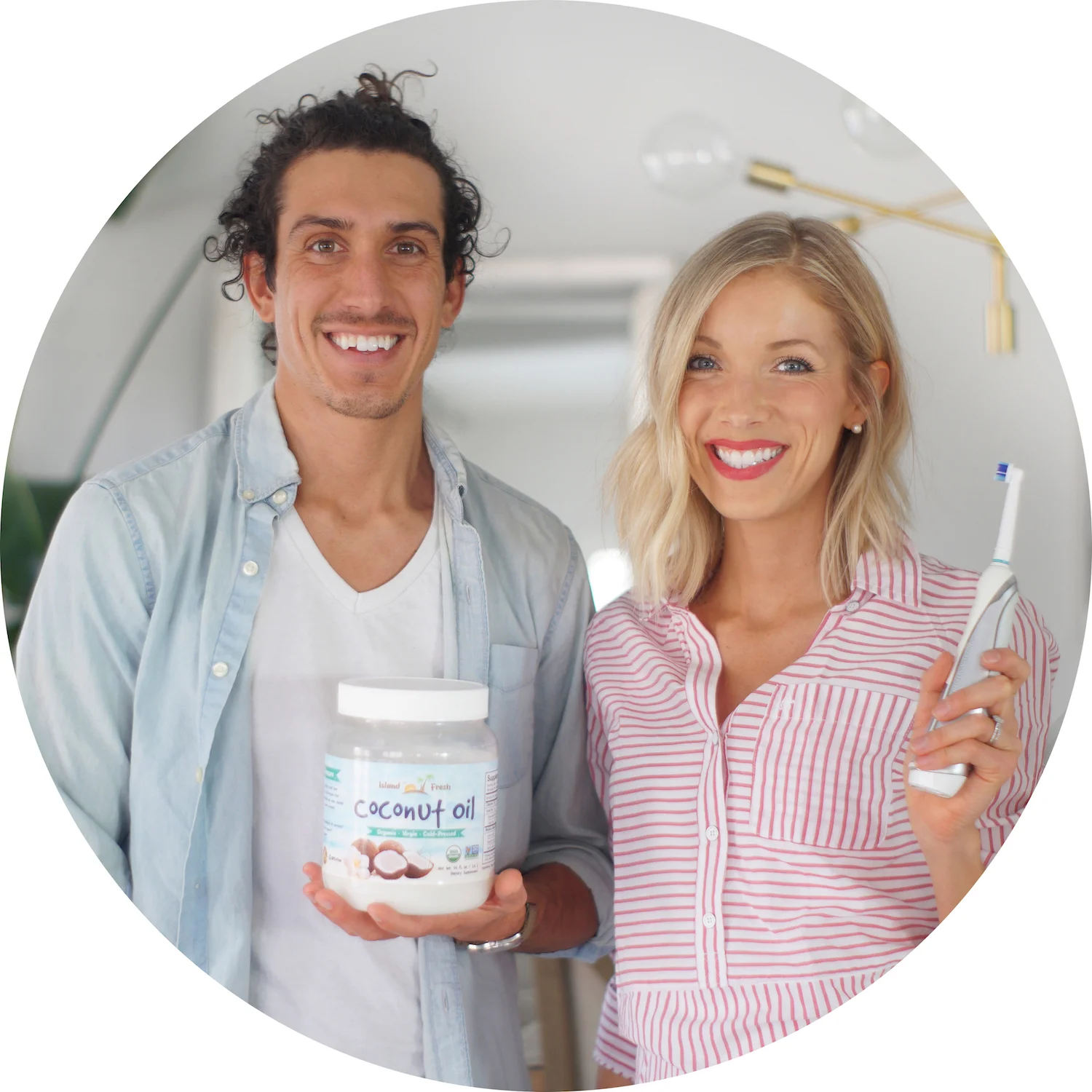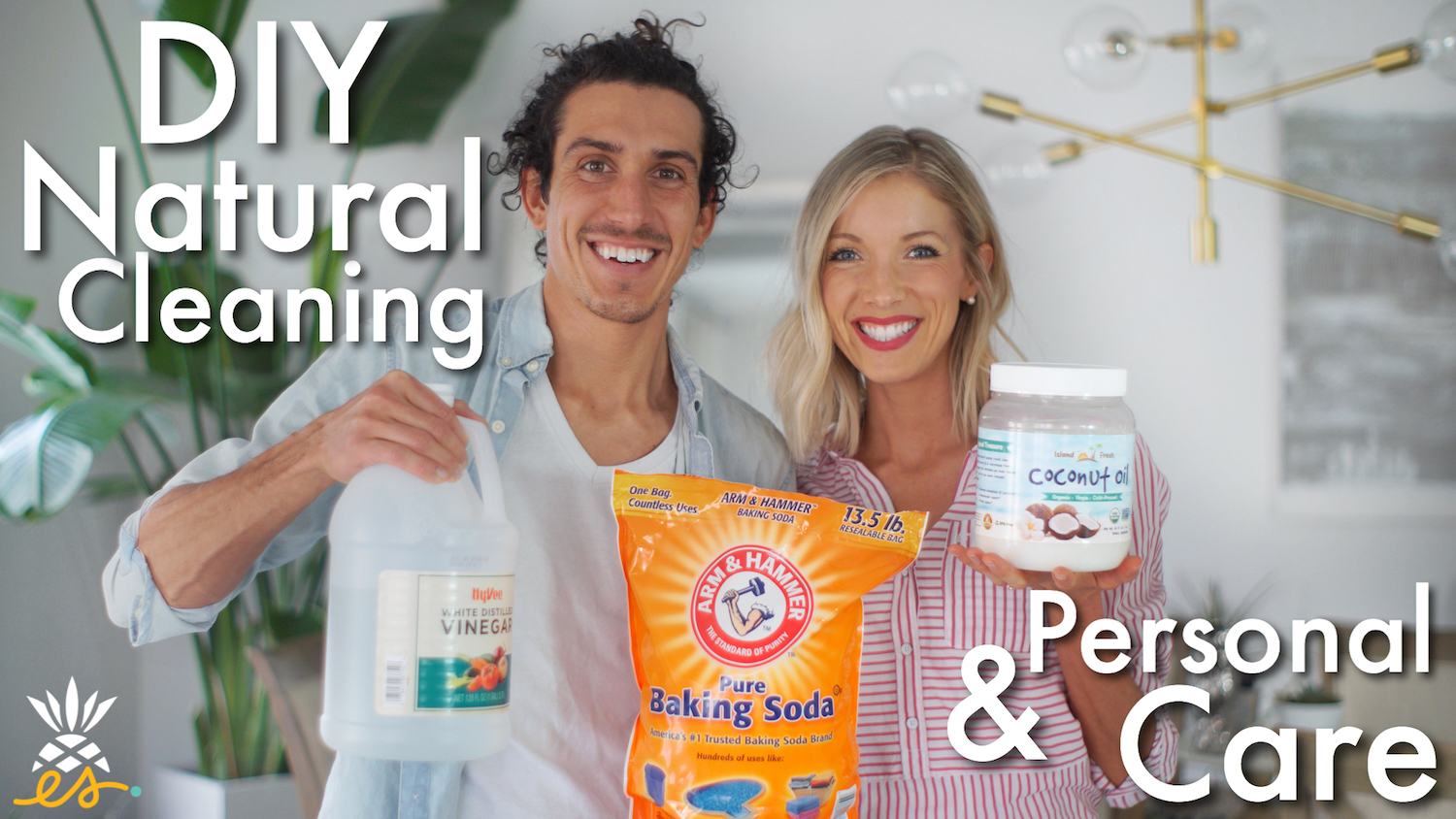When I was a kid, I lived off of all-things sugar. Whether it be my brother and I's weekly candy reward if we were quiet and well-behaved in church, or a slumber party trek to the grocery store to load up on sweets and inevitably stay up the entire night. Needless to say, I had many-a-cavity growing up. But, as Adam Sandler said in Big Daddy, "You're gonna lose those teeth anyway, so rot on!"
BUSINESS IN THE FRONT, PARTY IN THE BACK:
As I got older I realized how bad all that processed junk actually made me feel and cleaned up my diet, but I still found myself at the dentist getting a bad report. Another cavity. That meant more fillings, and more money down the drain. I couldn't figure out what I was doing wrong. I virtually eliminated all refined sugar from my diet and brushed and flossed morning and night. My smile was bright white, but if I said "ahhh," you'd see a filling in almost every molar. Literally, business in the front, party in the back! Every dentist I've ever been to growing up told me that the issue was simply genetics, and that some people are more prone to cavities than others, or that it was due to lack of fluoride in the water, among other reasons. They would always try to send me home with prescription toothpastes with weird added chemicals and tons of extra fluoride.
I'm scared of taking Advil for a headache, so I wasn't about to go down without a fight. I had to find a better way to solve my oral health than by adding in more chemicals when I was on a mission to cut back and simplify. I had been hearing and reading about oil-pulling in a lot of interviews and articles, but, quite frankly, it just seemed like a mouthful (pun intended).
Here's The Scoop:
Oil-pulling is essentially a method of eliminating toxins from the body by swishing around a spoonful of oil in your mouth for a prolonged period of time. Traditionally used in Ayurvedic medicine, this practice has been used for over 3,000 years. Check out this medical journal if you're curious! Any food-grade oil can be used, such as coconut, sesame, or sunflower oil. Coconut oil is optimal because it includes the added benefit of lauric acid, which is known for its anti-microbial properties. Ideally you will want to swish the oil in your mouth for about 20 minutes. While 5-10 minutes will do some good, the longer you go, the more bacteria will pull from your mouth. I know, you're thinking, You're insane! 20 minutes?! That's like an eternity! I thought the same thing! I'm a sucker for trying anything that's good for my health, though, so I had to give it a whirl!
Potential Benefits:
- Reduction in plaque, gingivitis, tooth decay, and bad breath
- Whiter and smoother teeth
- Clearer sinuses
- Reduction in sinus and ear infections
- Reduction in headaches
- Detoxification of the organs
- Strengthened immune system
- Reduction in joint pain and arthritis
- Clearing of acne, eczema, and other skin conditions
- And many more!
From my own personal experience, I can say that I definitely have a whiter smile without having to use whitening strips or chew whitening gum anymore, and it makes my teeth feel incredibly smooth—like I just had them polished at the dentist. Funny story. So my husband and I have both been oil-pulling for a couple of years now, and my dentist always asks me if I've been using the prescription toothpaste she gave me, and I've been too scared to say no, so I always say yes. (Come on, we all fib a little bit at the doctor's—we want them to give us a big pat on the back and tell us we're good patients!) All I've really been doing differently is oil-pulling religiously every morning for 20 minutes. The dentist, of course, said to keep using the toothpaste because it was doing wonders and my teeth looked better than ever. Cavity free at last! By the way, next time I have an appointment, I'm going to come clean to her about the oil-pulling!
Why It Works:
Although the positive impacts that oil-pulling may have on the entire body are debatable, it has been proven to do wonders for oral hygiene. And, oral hygiene is one of the most important determinators of overall health. Think about it, everything goes into you mouth. When you chew your food, there are millions of enzymes at work helping to break down and properly absorb and digest the nutrients in the things you eat.
When we improve oral health, we improve so many other things in the body...People with bad oral hygiene have higher incidence for cardiovascular issues such as heart attack and strokes, and a higher incidence for pneumonia. Men with periodontal disease have a greater risk of erectile dysfunction. Even with diabetes, improved oral health can help control problems in diabetic patients. Also, pregnant women with gum disease have lower birth-weight babies. Yes — everything is connected...When there is a healthier mouth, there is less inflammation in the body, and overall then everything can heal, the skin is better, you're in a better mood, you have more energy, because gum disease — if you have all this infection in the mouth, your body is constantly trying to fight this bacteria to keep it from entering your body...That is stressful for us. That chronic infection in the mouth, once it improves because we have better oral hygiene, we feel better and look better. —Dr. Sanda Moldovan, Periodontist
Got 20 Minutes to Kill? How to Oil-Pull:
- High-Quality, Food-Grade Oil: You can use any type of oil, but coconut has a mild, pleasant taste. I love Spectrum brand, and usually go for the organic, unrefined (less-processed) variety.
- On an Empty Stomach: Ideally, you'll want to do your oil-pulling first thing in the morning, before you eat or drink anything. That way the bacteria that's in your mouth won't get swallowed down into your body. Blegh! When I wake up, I like to take a couple gulps of water, swish it around, and spit it out.
- A Spoonful: Scoop about a tablespoon of oil and let it melt in your mouth. You don't want to gargle like you would with mouthwash. Instead, it's more of a swishing—pushing and pulling the oil in your mouth and through your teeth.
- Don't Swallow: Be careful not to swallow any of the oil, as it will (hopefully) be full of bacteria.
- Now What?: Here are some ideas for the next 20 minutes—and trust me, time really flies!
- Do some reading
- Listen to a podcast
- Check your email
- Meditate
- Wash your face and/or put on makeup
- Take a shower
- Get some chores done
- Or just watch this!
- Time's Up!: Be sure to spit the oil in the trash, not the sink! It can solidify and clog the drains. I always prefer to swish a couple big gulps of water in my mouth and spit it out in the sink afterwards, as well. And yes, you still have to brush and floss!
For more info, and a how-to video, check out Dr. Axe!
AS SEEN ON YOUTUBE
Check out our Top 3 Favorite All-Natural Cleaning & Personal Care Products for Better Health + Our 3-Ingredient Toothpaste Recipe! Be sure to Subscribe to our channel, Hit the bell to receive Notifications when we post new videos, Like our videos if you enjoy them, leave a Comment and show us some leave, and Share with friends and family@
The Takeaway:
When too much bacteria, viruses, fungi, and all that fun stuff overloads the body, the toxic burden can cause underlying, low-grade inflammation to eventually flare up and causes bigger issues. What goes into your mouth directly goes into your bloodstream. This is why minor oral hygiene problems like gingivitis can lead to serious issues like cardiovascular disease. All cells, bacteria included, are made up of a lipid (fatty) layer that attaches itself to the oil during oil-pulling. Like attracts like. It can be thought of like the oil that you put into your car—it keeps it clean by picking up dirt and grime.
For me, oil-pulling has helped immensely as far as oral hygiene goes. As for all of the other touted health benefits, 1) I have read several articles where physicians and dentists completely back the oral benefits of oil-pulling, as well as the improvement of various other health concerns. 2) You can find tons of websites and blogs where people swear by it, saying it cured their acne or arthritis. 3) It has been an Ayurvedic practice for thousands of years. I always figure, with ancient wisdom, it would have been phased out long ago if people weren't reaping some sort of benefit! The bottom line is that oil-pulling can't hurt, coconut oil has a pleasant taste, and compared to other techniques, it's a relatively cheap and easy detoxification method to try out.
For anyone who's leery, check out some of these medical journals on PubMed for more proof!
Be sure to leave me a comment and let me know what you think, or if you have any success stories!
Designed For Your Lifestyle,
Erin













